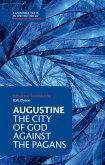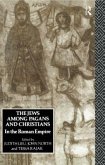This book embarks on a journey to uncover the rich tapestry of pagan lives across diverse cultures and time periods. It is an exploration that extends beyond the confines of simplistic definitions and acknowledges the multifaceted nature of paganism. This study aims to understand paganism not merely as a collection of abstract theological concepts, but as a lived reality shaping individuals' experiences from birth to death, influencing their social standing, relationships, and contributions to society. The work examines the daily lives of pagans, their social structures, their rituals and ceremonies, their art and architecture, their interactions with other cultures, and their responses to persecution. This book does not shy away from exploring the complexities inherent in studying paganism, addressing the challenges of defining such a varied and fluid phenomenon. The investigation recognizes the limitations of applying singular, universal definitions to a historical concept that encompassed a broad spectrum of beliefs and practices across vastly different cultures and eras. By studying a wide range of sources and carefully considering the context in which the information was collected and recorded, this exploration strives for a more complete and accurate representation. In doing so, it seeks to move beyond stereotypical portrayals and to appreciate the multifaceted ways in which pagan beliefs and practices shaped both the ancient world and the modern one. We will analyze their legacies, including their contributions to philosophy, science, and art. By examining both the triumphs and hardships faced by those who identified as pagans, this work seeks to offer a nuanced perspective on this essential aspect of human history, enriching our understanding of human experiences across cultures and generations.
Hinweis: Dieser Artikel kann nur an eine deutsche Lieferadresse ausgeliefert werden.
Hinweis: Dieser Artikel kann nur an eine deutsche Lieferadresse ausgeliefert werden.








